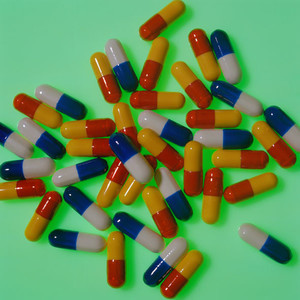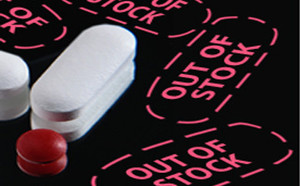The introduction of generics in France has been slow and cumbersome. It has taken 20 years for integration of generics into the market and for acceptance to be reached by healthcare professionals and patients. In a historical review of the emergence of generics in France, Rottembourg and Nasica-Labouze [1] reflect on developments in the generics market over this time.
The term ‘generic’ was first introduced in 1995 as part of the new government’s Health Plan to reduce public health spending. Agreements were forged with pharmaceutical manufacturers to sell their products at 70% of the cost of brand-name drugs, thus enabling pharmaceutical manufacturers to fix prices. This instigated a period of generics development among originator pharmaceutical manufacturers, for instance, the establishment of dedicated generics departments and the acquisition of generics companies.
In 1999, the Health Insurance Funding Act introduced the notion of the ‘right of substitution’ for pharmacists. The principle of equal profit margins between generic and brand-name drugs was heavily lobbied among physicians and public authorities by the Pharmaceutical Unions Federation, but received much opposition. Approval by pharmacist unions of this new measure would ensure that public authorities would not benefit economically from generics. The public authorities eventually agreed to relax the system of ‘smoothed decreasing profit margin’ first established in 1990.
Public authorities also restricted the ‘right of substitution’ to certain generics groups, which were subsequently registered in the ‘Generics Repertory’. This ensured that a generic drug could not be substituted unless it had been registered. Consequently, the generics market slowly took off, but with rates of substitution under the expected 35%.
In June 2002, the new government yielded to pressure from general practitioners to increase the cost of a medical consultation to Euros 20 in return for increased support for generics. Public authorities then increased discounts agreed by manufacturers to pharmacists and further decreased the smoothed decreasing profit margin, making it more profitable for a pharmacist to sell a generic drug than a brand-name drug. The target rate of 35% substitution was finally achieved.
In 2010, the generic drugs system transferred from government to the Health Insurance System. They agreed with pharmacists to increase the substitution target to 80% for 20 molecules. By 2012, patients were offered an advance on costs for those willing to accept substitution drugs.
Between 2009 and 2012, the French National Health Insurance Agency intervened to fix the depletion of the drug repertory resulting from the expiration of drug patents for the most commonly used molecules, making them fall into the public domain. It also instituted a form of performance-related pay for general practitioners meeting targets relating to increased subscribing of certain substitution drugs. A similar arrangement was implemented for pharmacists in 2012, which included a list of 30 generic groups with set target substitution rates. The projected global rate of substitution of 85% was projected for the end of 2012.
Finally, on January 2015, generalization of International Nonproprietary Name (INN) prescriptions recommended by the World Health Organization came into effect, further promoting the substitution movement.
Rottembourg and Nasica-Labouze believe that France’s persistence in price-fixing generics, and the preclusion of any system of competition, is one reason why it has taken so long for the generics market to develop in France compared with other countries in which competition between manufacturers has led to bigger price reductions [2]. Debate continues in France about opening up the market to pharmaceutical competition.
They also question whether the huge investment in biotechnology innovation will generate a new wave of generics when patents start to expire. They believe that industrial production of genetically modified live cells is difficult and cannot be compared with generics, legally, medically or economically. They foresee a new market for biosimilars emerging, characterized by different operational rules and highly specialized high-technology pharmaceuticals. In years to come, they believe that the biosimilar market may play a role similar to the generics market.
Editor’s comment
Readers interested to learn more about uptake of generics in Europe are invited to visit www.gabi-journal.net to view the following manuscripts published in GaBI Journal:
The impact of pharmaceutical pricing and reimbursement policies on generics uptake: implementation of policy options on generics in 29 European countries─an overview
Readers interested in contributing a research or perspective paper to GaBI Journal – an independent, peer reviewed academic journal platform – please send us your submission here.
Related articles
French Government pushing generics
Generics gaining ground in French pharmaceutical market
References
1. Rottembourg J, Nasica-Labouze J.The implementation of generics in France. Generics and Biosimilars Initiative Journal (GaBI Journal). 2015;4(3):136-40. doi:10.5639/gabij.2015.0403.029
2. GaBI Online - Generics and Biosimilars Initiative. Cost savings and use of generics in Europe [www.gabionline.net]. Mol, Belgium: Pro Pharma Communications International; [cited 2015 Sep 18]. Available from: www.gabionline.net/Reports/Cost-savings-and-use-of-generics-in-Europe
Permission granted to reproduce for personal and non-commercial use only. All other reproduction, copy or reprinting of all or part of any ‘Content’ found on this website is strictly prohibited without the prior consent of the publisher. Contact the publisher to obtain permission before redistributing.
Copyright – Unless otherwise stated all contents of this website are © 2015 Pro Pharma Communications International. All Rights Reserved.








 0
0











Post your comment